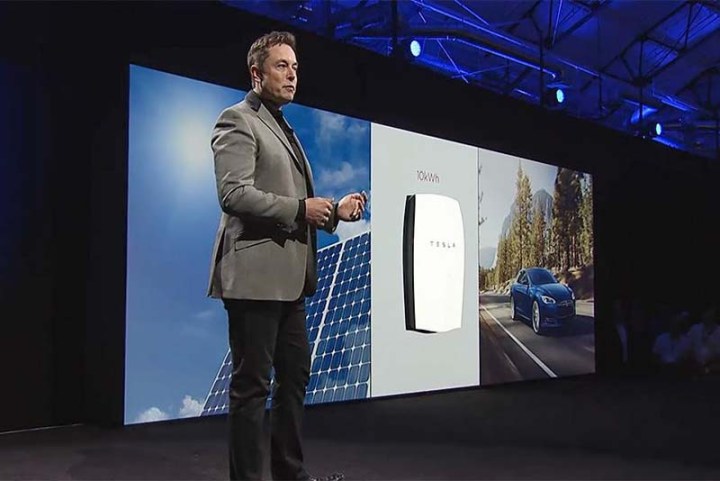
Earlier this week, Tesla’s Chief Technology Officer, JB Straubel, officially unveiled the new 1.5-acre space to a throng of employees, government workers, and media personnel. While speaking to the gathered crowd, rows of Tesla’s massive Powerpack batteries (i.e., the commercial version of Tesla’s Powerwall battery) and industrial inverters lined the property, dotting the dusty environment with the company’s trademark white and red color scheme. Aesthetics aside, Mira Loma’s sole existence is to store surplus energy that would otherwise dissipate without use. Instead of power stations creating energy that goes unused, Tesla’s new grid stores that surplus for when energy needs rise.
“This project is exactly in line with our mission to accelerate sustainable technology and sustainable energy broadly for the world,” said Straubel at the event. “Storage is a piece that’s been missing on the grid since the grid was invented, so thanks to these technologies, we’re right at the turning point of being able to deliver storage and use renewables — solar, wind, and others — that can power people’s needs for longer parts of the day.”
As energy grids gear up to move away from the use of fossil fuels, the problem of not only creating renewable energy remains — either solar or wind-produced — but there also exists the question of how to store it. Mira Loma represents an incredibly reliable solution to this need and one capable of allowing the continued shift away from electricity generated via fossil fuel. In addition to having the ability to run 15,000 homes over four fours, the station’s store energy could also power 2,500 homes for a full 24 hours. Though this station is just the beginning, it’s highly likely more storage centers like Ontario’s begin to pop up around the country.
Editors' Recommendations
- Watch Elon Musk unveil Tesla’s advanced humanoid robot
- This Tesla video manages to make battery production look cool
- Elon Musk’s Tesla Roadster just whizzed past Mars
- Tesla unveils $140,000 Model S Plaid that can go from 0 to 60 in under 2 seconds
- Tesla unveils ‘truly revolutionary’ new battery



